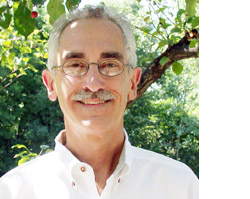
KC: At that time, what was EV’s status in pro audio?
JL: EV was one of the dominant microphone companies in virtually all applications, and they were also big in hi-fi gear and, to a certain extent, provided commercial sound equipment.
I remember seeing a JBL 375 large-format compression driver acting as a doorstop in the engineering department. I didn’t even know what it was.
The director of engineering at that time, John Gilliom, explained that it was a professional sound driver and that we (EV) should make them someday.
About 1973, John started designing a driver, and horn work was also ongoing, with Don Keele serving as the project engineer on the first constant directivity (CD) horn.
The ideas behind constant directivity – maintaining a uniform coverage angle over a wide frequency range – came from John and Ray Newman, as I recall. Don was relatively new to the company at that point, and he took the idea and ran with it, including new and extensive measurements of horn coverage versus frequency, and made the product a reality.
So we ended up with this funny-looking HR Series of white fiberglass horns – the first CD horns. The ones I use in the home stereo, because I’ve never found a better-sounding horn. There were no dedicated low-frequency drivers or enclosures, only box plans for our EVM musical-instrument speakers… and no marketing plan.
KC: So how did you introduce these to the market?
JL: Well, we were going through some pretty lean times at that point, but we had made these horns and drivers, and I remember that (noted consultant) Bob Coffeen liked the light weight of the horns in addition to their constant directivity.
So Bob specified HR horns for the Silverdome in Pontiac, Michigan – a huge sports arena with an air-supported roof, so the light weight of the horns was a necessity. This got us into the business.
Dave Klepper and Larry King of Klepper Marshall King also helped a lot by letting us have the 1976 Yankee Stadium renovation project, which they designed. A Bogen contractor won the bid, but they were a commercial sound company and couldn’t buy the Altec and JBL “pro sound” speakers specified.
So we sold them our “line array” – heard that term recently? – made up of a huge stack of HR horns mounted in a steel structure above the outfield. There was also a whole bunch of our CDP commercial horns to cover shadowed regions of the main grandstand. It makes sense that these would have been on delay, a very early digital delay, but then again, that doesn’t seem possible given the timeframe. You forget some of the details as the years go by.
The dealer couldn’t equalize the system, didn’t know enough about tuning, didn’t have a spectrum analyzer, had never seen a third-octave graphic EQ, which were still kind of new then. So I, along with some EV technical folks, came out and worked with Larry King on tuning. I don’t even know for sure that we knew exactly what we were doing, but that system was there for a long, long time.


